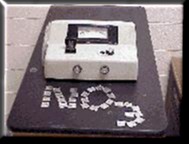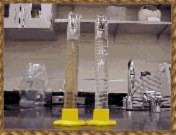|
|
||
|
Nitrates |
||
A Nitrate is a molecule composed of nitrogen and oxygen. It forms when nitrogen combines with water.
Nitrates and Your Diet
Most adults take in 20-70 mg. of nitrogen per day, most of which comes from eating lettuce, celery, beets and spinach.
Nitrate Levels in Drinking Water and Sources of Contamination
State and Federal law set the maximum level of nitrate-nitrogen in public drinking water at 10 mg. per liter. These laws apply to all city and village water supplies and are used as an advisory for private wells. Common sources of nitrate contamination include fertilizers, animal wastes, septic tanks, municipal sewage treatment systems, and decaying plant debris. These contaminates usually drain into the soil by means of farms and or are already underground from leaky tanks.
Testing for Nitrates
Public water supplies are tested regularly for the presence of nitrates. A nitrate test is recommended for all newly constructed private walk and wells that have not been tested during the past five years/ Testing is also recommended for wells used by pregnant women and is essential for wells that serve infants less that six months of age. Wells with nitrogen level below five milligrams per liter should be re-tested every few years. If the levels are between five and ten milligrams per liter, owners should consider testing more often to check for seasonal changes.
The test we conducted in class was very simple. It is the same test that the state does if you were to send in a water sample. First, we set up the spectrophotometer. This device measures light that passes through a cuevette containing you water sample. The light that passes through the water sample is measured in percent. You then take that percent reading and look at a chart to determine the number of mg/L (parts per million).


Spectrophotometer Positive Test Negative Test
Health Concerns
Infants that consume above 10 milligrams per liter of nitrate can develop a condition that doctors call methemoglobinemia or "Blue Baby Syndrome". It is called "Blue Baby Syndrome" because the skin appears to be blue-gray or lavender color. This color change is caused by lack of oxygen in the blood. All infants fewer than six months of age are at risk of nitrate poisoning. Some babies may be more sensitive than others may. Infants suffering from "Blue Baby Syndrome" need immediate care because the condition can lead to a coma and death if it is not treated promptly. The majority of people affected by high levels of nitrates are infants.
Graph of results
Locations tested
Sources of information
Credits